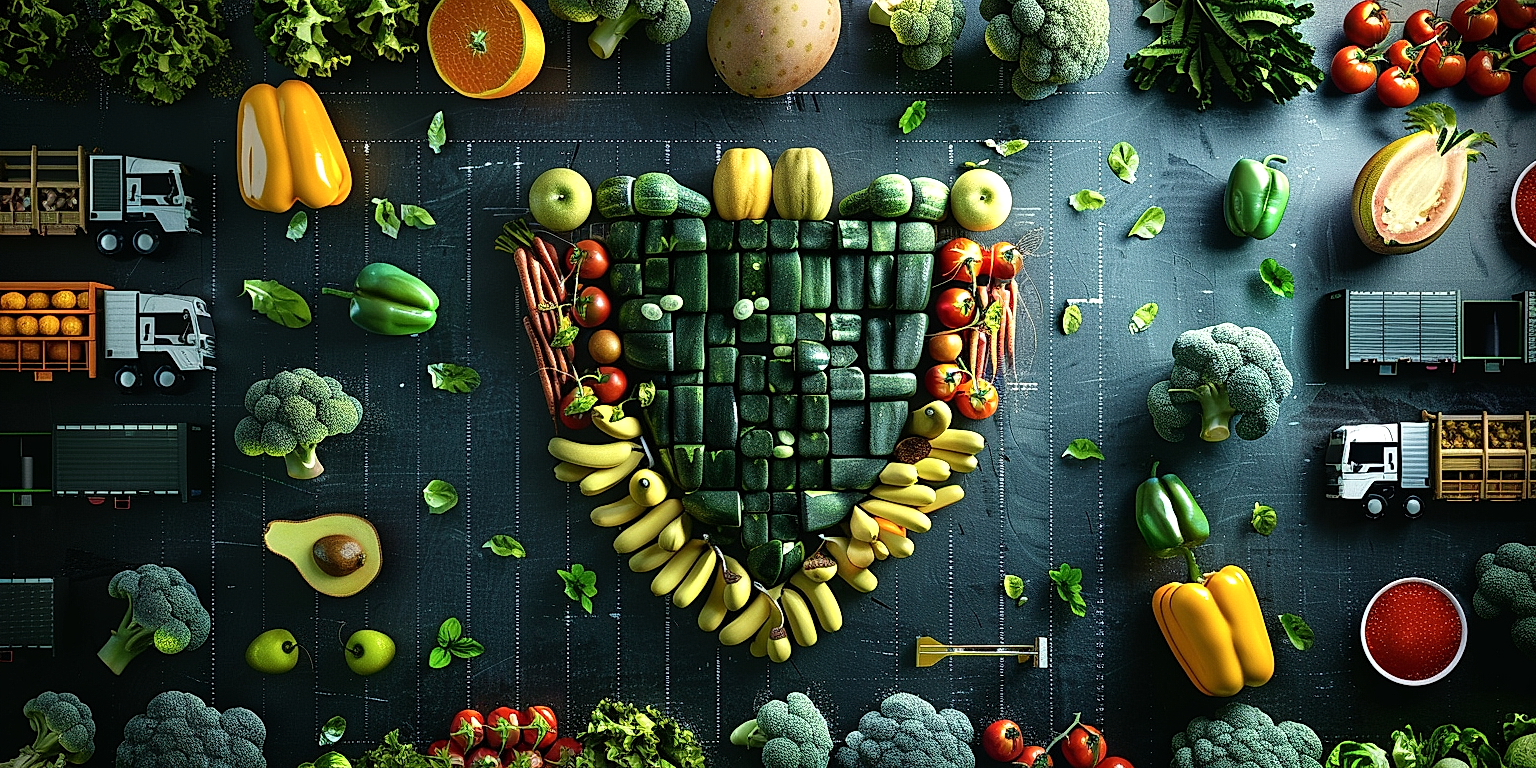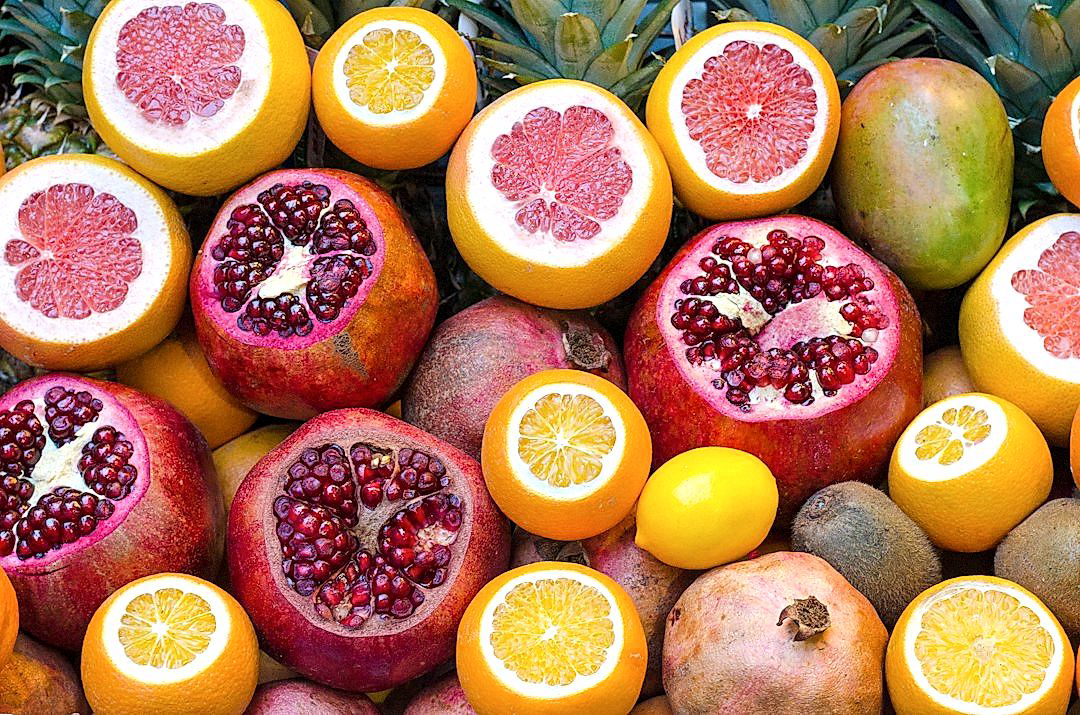In the dynamic and critical industry of produce distribution, maintaining a firm grasp on safety protocols is tantamount to success.
Missteps not only affect profitability, but also pose serious risks to health and welfare.
This extends to diverse aspects of the operation—from harvesting to transport.
It’s not merely about complying with regulatory mandates; it also deeply involves a company-wide commitment to fostering a culture of safety.
This comprehensive approach can safeguard businesses, employees, and consumers alike.
The following recommendations aim to bolster this much-needed safety culture in the produce distribution sector.
Culture Of Safety Tips For Produce Distribution
1. Regularly sanitize all transportation and storage equipment.
In the realm of produce distribution, no aspect is more critical than the continuous cleanliness and maintenance of all transportation and storage equipment.
Every piece of equipment that comes into contact with fruits and vegetables must be methodically and frequently sanitized.
This is crucial not only for preserving the quality and safety of the products but also for preventing the spread of harmful bacteria, yeast, and mold that could lead to foodborne illnesses.
While most companies understand the importance of cleanliness, underestimating the necessity for regular sanitation could spell disaster for your business and your customers’ health.
A robust cleaning regime should include a combination of physical cleaning with brooms, brushes, and power washers to remove visible debris, and chemical sanitizing to kill microorganisms that may survive regular cleaning.
Products such as detergents, sanitizers, and disinfectants, when used properly, can eliminate bacteria, yeast, pests, and other potential contaminants.
The use of appropriately approved and environmentally friendly cleansing agents is also a big part of ensuring safety and sustainability in the process.
It is also essential that sanitation schedules are strictly adhered to, and any cleaning or sanitizing done is adequately recorded for traceability purposes.
In addition to sanitizing the storage and transportation equipment, the environment in which they are stored should also be clean and well-maintained.
This includes the storage rooms, delivery vehicles, and even the outdoor areas where these storage and delivery systems are located.
Sanitizing these areas reduces the risk of cross-contamination, thus ensuring that the storage and transport equipment remain uncontaminated.
Upgrades or replacements of old equipment can also increase overall sanitation.
Finally, remember that sanitation is not a one-time event.
The constant movement of goods and regular usage of equipment means that dirt, debris, and microbial populations can quickly accumulate, making systematic, ongoing sanitation an absolute necessity.
The slightest contamination can compromise the entire supply chain, leading to potential product loss, harmful outbreaks, and a damaged reputation.
Above all, establishing and implementing rigorous sanitation procedures shows commitment to maintaining the highest standards in food safety.
2. Adequately Train Workers on Handling Procedures
Proper education and training regarding handling procedures are integral aspects of ensuring a culture of safety in produce distribution.
Having adequately trained workers provides a safeguard against potential pitfalls and danger zones that could jeopardize the quality and safety of perishable goods.
A well-trained workforce knows precisely how to handle every step of the distribution process, from picking and packing to transport and storage.
Empowering employees through training significantly reduces the risk of mishandlings and mistakes that could lead to spoilage, contamination, or spread of diseases.
To achieve this, businesses should invest in regular training sessions, workshops, and refresher courses that keep the workforce abreast with the latest practices and technologies.
Produce handling procedures can vary greatly from one type of produce to another, which makes specialized training equally important.
In addition, training workers on the best ways to handle emergencies and unexpected situations can go a long way in maintaining and even improving safety levels.
Part of the handling procedures is ensuring that all personnel are aware of the importance of personal hygiene as well as sanitation of equipment used in the transportation and storage of goods.
Training should also cover topics like the importance of temperature control and the dangers of time-temperature abuse.
Regardless of the size of the operation, thorough trainings to increase the workers’ awareness about the importance of time management and temperature control would significantly enhance the overall safety.
Lastly, businesses should ensure that the trainers themselves are highly skilled with a deep understanding of the industry, safety regulations, and best practices.
This way, employees can benefit from the wealth of experience and learn practical skills that would certainly benefit the entire produce management process.
Training is continuous, and hence its planning and execution need a systemic approach that focuses on constant improvement and learning.
Indeed, adequately training workers on handling procedures will not only ensure produce safety but also empower employees, making them feel more confident and valued which eventually leads to increased productivity and job satisfaction.
3. Frequently Check Quality of Perishable Goods
One of the most crucial steps in maintaining a culture of safety and hygiene in produce distribution is to ensure the frequent and thorough checking of the quality of all perishable goods.
The quality of perishable goods directly affects the safety and health of consumers, making it a major area of concern in any distribution process.
Perishable goods, like fruits and vegetables, are prone to decay, spoilage, and bacteria, and their quality can rapidly decline if not properly handled and stored.
Each product should be inspected visually for any signs of deterioration, such as discoloration, bruises, soft spots, mold, or off-odors.
During transportation, it is vital that the quality of the produce is maintained.
An effective way of ensuring this is by strictly regulating the temperature and humidity during transportation and storage to suit the specific needs of each type of produce.
It’s not enough to just inspect the goods at the onset of the journey; they must be monitored continually throughout the transportation process.
Random samples should be taken from each shipment and subjected to quality checks and microbial tests.
Technology can aid in the regular check of the quality of perishable goods – tools like sensors can help monitor temperatures, humidity levels and other factors that could affect the quality of the produce.
Additionally, a well-documented record of inspections should be maintained, documenting the date, time, findings, and any corrective actions taken if the quality was found to be compromised.
The regular checking of the quality of perishable goods is not just about avoiding bad products, it’s also about improving the overall culture of safety within your organization.
By doing so, you can take immediate action if problems arise, thereby preventing potential health risks to consumers.
This practice also helps to build trust with your customers, as it demonstrates a high commitment to quality and safety.
Implementing a routine procedure of checking the quality of perishable goods is an integral part of a proactive approach to safety in produce distribution.
Through such rigorous checks and balancing measures, you can help to ensure that only the highest quality produce reaches the market, reinforcing a responsible culture of safety within the produce distribution industry.
Remember, in produce distribution safety, quality checks on perishable goods is not just an obligation, but a vital procedure that must be given the utmost seriousness.
4. Maintain correct temperature during storage/transport.
Produce distribution requires strict adherence to good storage and transportation practices to ensure the highest quality of the goods.
Fruits, vegetables, and other perishable goods are often highly sensitive to temperature variations and maintaining the correct and constant temperature during storage and transport plays a vital role in preserving their freshness and extends their shelf life.
The storage and transportation temperature should be adjusted based on the type of produce.
For instance, a lot of fruits and vegetables require cool, but not freezing temperatures to preserve their quality, while bananas require warmer conditions to maintain their optimal state.
There are different temperature standards set by food safety authorities and they are specifically calculated to maximize the freshness and quality of various kinds of produce.
Adherence to these standards not only provides the best quality produce to the consumers but also minimizes unnecessary waste caused by improper storage and transportation conditions.
Few Instances of these appliances are refrigerated trucks, cold storage units, and temperature-controlled shipping containers.
The temperature settings in these appliances should be checked and recorded frequently during the transportation process.
It is also crucial to ensure that the temperatures are maintained consistently during the entire logistical process.
If not done properly, any deviation from the required temperature standards can cause irreparable damage to the produce.
The implementation of state-of-the-art temperature tracking technology can prove to be beneficial in achieving this.
Modern systems can provide real-time monitoring and remote access to temperature data, which can help to detect and fix any issues immediately.
By maintaining a correct temperature during storage and transportation, produce distributors can ensure the delivery of fresh and quality products to the end consumers.
Moreover, these practices also support the culture of safety in produce distribution by minimizing the risks associated with foodborne illnesses that can be caused by improper storage and transportation conditions.
Last but not the least, stringent regulatory oversight, combined with automated monitoring processes, can minimize the negative impacts on the profitability and reputation of produce distribution companies.
5. Emphasis on Personal Hygiene of Staff
Personal hygiene of the staff is a basic yet significant aspect of safety in produce distribution.
The direct or indirect influence of the staff’s personal hygiene on the quality and safety of the produce cannot be underestimated.
Staff handling the produce should wash their hands thoroughly and frequently, especially before and after handling produce.
Nails must be kept clean and short to prevent dirt accumulation because germs can easily hide under long or dirty nails.
It’s encouraged to wear clean and appropriate protective clothing like gloves and hair caps while handling the produce.
The absence of personal cleanliness can lead to the contamination of produce, which can jeopardize the consumer’s health.
Certain regulations and standards for personal hygiene in food handling set out by the health department should be strictly adhered to.
Early morning showers and properly laundered uniforms are some of the ways to ensure cleanliness.
Eating, drinking, or using tobacco in the storage or transportation area should be strictly prohibited as they can lead to contamination.
A furtive touch to the face or a sneeze can lead to produce contamination if protective measures are not taken.
Frequent and thorough sanitation of hands, uniforms, and any other equipment should be carried out.
Personal medical conditions that might pose a risk to the hygienic handling of produce should be communicated to the management.
Employees handling the produce should be adequately trained on the importance of maintaining high personal hygiene.
Continuous monitoring and reinforcement of personal hygiene practices among the staff are imperative to assure the safety of the produce.
Periodic audits and assessments can be useful tools to quantify the hygiene standards and make necessary improvements.
By considering personal hygiene as part of the work culture, effects of contamination can be significantly reduced thus creating a safe and healthy work environment.
The Bottom Line
We can therefore deduce that the safety and standard of perishable goods is essentially reliant on meticulous maintenance routines and worker knowledge.
Regular cleanliness of both transport and storage means can considerably reduce the risk of contamination.
Likewise, ongoing worker training ensures the correct handling and storage processes are conducted, further determining the standard of the goods.
Frequent quality assessments add another layer of assurance for the overall state of these perishable items.
Moreover, maintaining precise temperature conditions safeguards not only the quality but also the shelf-life of these products.
Lastly, personal hygiene of the workforce cannot be emphasized enough as it plays an integral role in minimizing the risk of foodborne diseases.
Adherence to these guidelines can significantly increase the overall integrity of perishable goods offered to consumers.




